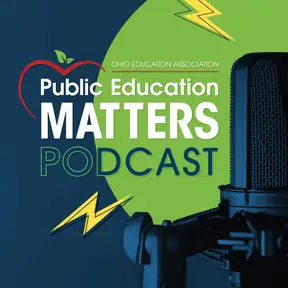Understanding Ohio's School Funding Formula (or lack thereof)
Ohio's school funding system is broken. It was declared unconstitutional in 1997, and the state has been waiting for reforms to address the adequacy and equity issues since then. Economist Howard Fleeter, a consultant for the Ohio Education Policy Institute, takes a deeper dive into the history of Ohio's school funding, the ongoing problems, and where a proposed solution could go from here.
"The understanding is it's the state's responsibility to set up a school system with proper funding that will meet the needs of all the kids across the state. We've got 610 school districts, which is a lot even for a state our size, which is 11 million people, and that creates two concerns about the funding formula - one is adequacy and one is equity."
Featured guest:
- Howard Fleeter, economist & Ohio Education Policy Institute consultant
- Dr. Howard B. Fleeter received his BA from Northwestern University and a Ph.D in Economics from the University of California, Berkeley. He was a faculty member in the School of Public Policy and Management at Ohio State University from 1989-1999, where he taught courses in Public Sector Economics, Public Finance, and State and Local Government Finance. He was a four-time recipient of the School’s “Faculty of the Year” award for excellence in teaching. Fleeter was also a faculty member in the School of Education at the University of Massachusetts Amherst from 1999-2001, where he taught courses in the Economics of Education and School Finance. His research has focused on state and local government finance, education funding and education policy, and applied microeconomics. He joined Richard Levin and William Driscoll as a partner in the research and consulting firm Levin, Driscoll & Fleeter in 2002. Dr. Fleeter has extensive experience working with policymakers and stakeholders on issues of education and human services finance, tax reform and analysis, state budgeting, economic impact analysis, and other related policy issues.
- Learn more about Dr. Fleeter's public policy research firm: https://www.fleeterandassociates.com/
In this episode:
"The biggest issue for adequacy in the DeRolph decision was that the numbers that were used in the formula were just kind of plucked out of thin air... All of the numbers in the formula need to be based on some reasonable estimation of the cost of doing this particular thing."
- 0:40 - Ohio Governor Mike DeWine's executive budget
- 1:30 - FY 20 & FY 21 funding formula frozen at FY 19 levels
- 2:15 - The effect of the COVID-19 pandemic on school funding
- 3:50 - Understanding the DeRolph decision
- 4:30 - Ohio's constitutional guarantee for a system of common schools
- 5:00 - The inherent inequities of funding schools through property taxes
- 6:00 - The adequacy issue: "You need some sort of objective standard that every kid is going to get a reasonably high-quality education"
- 6:30 - The different costs of educating different students
- 7:30 - Effectively not having a school funding formula in place right now: "We've taken a bad situation and made it worse."
- 8:55 - Calculating the "base cost" per student
- 11:20 - Over-reliance on local property taxes
- 12:00 - How do you construct a school funding formula that complies with the Ohio Constitution?
- 13:00 - The Fair School Funding Plan, introduced as House Bill 1 this legislative session
- 15:00 - The plan for computing the state and local share based on property wealth and local income
- 16:00 - The Fair School Funding Plan's history as House Bill 305 and its future in the current budget process
- 19:00 - School funding in the Ohio Senate
"Right now, that's a guessing game. No one has any idea what the Senate is going to do."
Connect with us:
- Email educationmatters@ohea.org with your feedback or ideas for future Education Matters topics
- Like OEA on Facebook
- Follow OEA on Twitter
- Follow OEA on Instagram
- Get the latest news and statements from OEA here
- Learn more about where OEA stands on the issues
- Keep up to date on the legislation affecting Ohio public schools and educators with OEA's Legislative Watch
About us:
- The Ohio Education Association represents more than 120,000 teachers, faculty members and support professionals who work in Ohio’s schools, colleges, and universities to help improve public education and the lives of Ohio’s children. OEA members provide professional services to benefit students, schools, and the public in virtually every position needed to run Ohio’s schools.
- Education Matters host Katie Olmsted serves as Media Relations Consultant for the Ohio Education Association. She joined OEA in May, 2020, after a ten-year career as a television reporter, anchor, and producer. Katie comes from a family of educators and is passionate about telling educators' stories and advocating for Ohio's students.
This episode was recorded in February, 2021.

